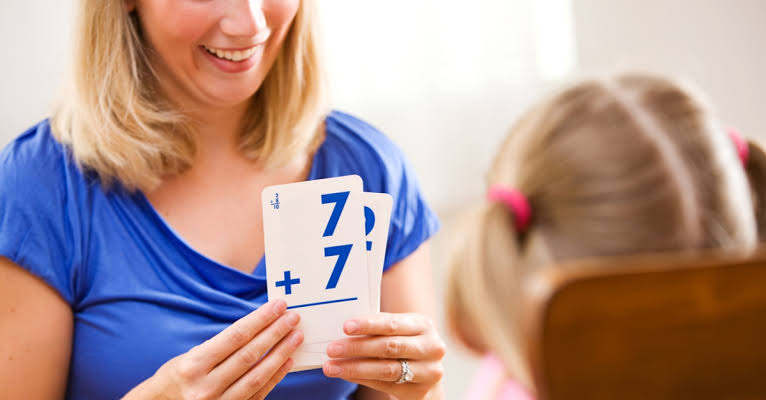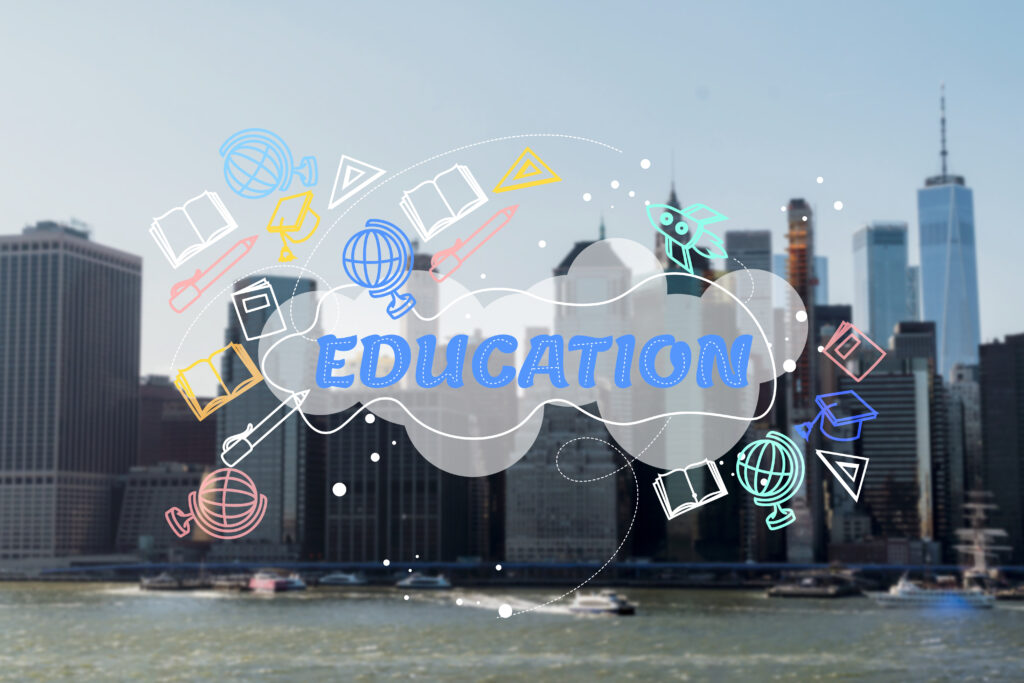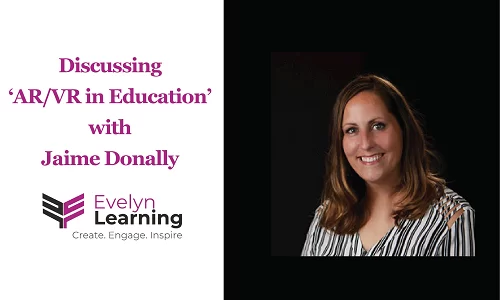In this age of short attention spans, flashcards as a teaching tool are ideal for memory retention. Simply put, a flashcard is a piece of paper with a cue or tip on one side and a corresponding response on the other. A question, a picture, or even just one word can be used as a cue to prompt or activate an expected reaction. Definitions, foreign language vocabularies, scientific symbols, historical dates and traffic signs, as well as countries and their respective capitals or currencies, can all be memorized in a “question and answer” style.
Online flashcards are a vogue these days. Students can utilize flashcard apps on their phones or tablets to learn a variety of subjects in a more engaging manner. They can now create visually stunning and instructive presentations and decks on their own. These apps’ high-tech algorithms enhance learning in ways it has never been done before. This article includes a handful of the many advantages of using flashcards in schooling. In addition, it will go over how to use them in the classroom, how to make flashcards, and to use them in online instruction.
What Is A Flashcard?
Flashcards are cards with a limited amount of information on them, such as words, phrases, questions, photos, numbers, or even a little sketch. All these are usually related to a subject and/or a study topic. They are useful for learning and studying tasks that involve memorizing. This is because they attempt to improve a learner’s active recollection of a topic’s details.
Reading Disentangled (1834), a set of phonics flashcards created by English educator Favell Lee Mortimer, is often acknowledged as the first set of flashcards. Available in both paper and digital formats, a flashcard in its most basic form has two sides- a front side with a question and a rear side with an answer. Students work their way through a deck, answering the questions on the front and validating their answers on the back.
Benefits Of Using Flashcards As A Teaching Tool
Since they are based on active memory, metacognition, and spaced repetition, flashcards are effective. The following are the most significant advantages of utilizing them as a teaching tool.
1) Flashcards Are A Low-cost Option
When it comes to study materials, they are unquestionably one of the most cost-effective options available. To prepare a set of flashcards, educators do not need to purchase a fancy set of cards. Simple index cards (about 3-by-5 inches in size) are more than suitable for use as flashcards.
2) They Are Easily Transportable
Flashcards as a teaching tool are lightweight, portable learning materials that may be carried anywhere. In comparison to textbooks, they are less bulky and may be accessed wherever and whenever one wants. Educators are welcome to bring them in large quantities. They would be completely oblivious to the weight.
3) They Are Effective
Flashcards can take learning to a whole new level by speeding up the process of learning for one’s personal benefit. Their mobility also aids in improving overall learning efficiency. Students are able to make better use of their time and learn something new every day if they carry their decks wherever they go.

4) They Are Adaptable
There is no requirement for educators to use flashcards as a teaching tool exclusively for one subject. Students can use them to learn about almost any subject. History, geography, biology, mathematics, physics, chemistry, foreign languages and vocabulary are all possibilities.
5) Flashcards Help To Make The Entire Learning Process Easier
Whenever educators are designing flashcards, they should always include only the subject’s fundamental underlying concept, something that the brain can absorb in a flash. Educators must make an effort to simplify the material they put on them.
On their flashcards, they should only write the fundamental underlying principles of a subject topic. This assists in simplifying the overall learning process.
Flashcards In Classrooms
Dates, vocabulary, basic facts, historical events, scientific terminology, procedures, and equations can all be swiftly memorized and learned with flashcards. They are not advised for in-depth analysis of a topic, however, because they only provide key facts and not the details of a subject/theme. Inside the classroom, the teacher can utilize flashcards as a supplement to provide an outline at the start or end of the lecture. A flashcard can also be used as a revision tool to assist students in preparing for an examination by allowing them to summarize significant material learnt in the classroom, which can then be examined independently by the learner or in a formal evaluation in the classroom.
It is recommended that when teachers utilize flashcards in the classroom, they be systematic and make it a habit for the students. It will be ineffective to utilize them only once in a while, as repetition is essential for learning new knowledge. As a result, it is more beneficial to introduce them throughout the year and to use them for revision in the classroom on a frequent basis. This is a fantastic review approach because students will have a whole set of flashcards to study for a larger examination by the end of the semester or year.
How To Make Flashcards?
Educators can create paper flashcards by hand or utilize digital tools to create virtual flashcards when it comes to making flashcards. Although it takes longer to make cards by hand than it does to make them online, some students prefer to have actual cards. Both strategies are equally effective, therefore instructors must choose between the two.
• Making Flashcards By Hand
Educators can start using index cards to build their own flashcards by hand. They can cut an ordinary sheet of paper into equal pieces if they do not have index cards. They can then either hand write the material or input it into Microsoft Word or Google Docs and print it. Handwriting flashcards can also help with memory recall.

• Making Flashcards Using Flashcard Apps
Making cards with flashcard applications is simple and quick. Online cards may be more comfortable for pupils who are used to being glued to their laptops or workbooks all day. As a flashcard builder, educators can use a variety of websites and apps. Canva, Quizlet, and Cram are among the most popular.
Benefits Of Using Flashcards In Online Learning
It is critical for educators to assist students in structuring their revision in the most efficient manner feasible. When studying for tests, students frequently feel overwhelmed by the volume of study notes. By enhancing their memory, flashcards let students quickly comprehend the study material. Using these cards as a teaching tool in online teaching improves recall and information retention capabilities.
1) Learning On-the-Go
If each student gets access to an educator’s flashcard deck, they may study it at a time of their choosing, even on the go, using their phone, tablet, or other mobile device – ensuring that they have it with them at all times.
2) Enhance Memory And Retaining Capacity
Flashcards have been shown to boost long-term memory. Students can practice a topic with flashcards and re-visit it at regular intervals to assess themselves. This boosts their capability to recollect crucial data as well as their ability to retain that information. It also ensures that students remember what they have studied when tests approach.
3) Add Interactive Images
Flashcards as a teaching tool are useful for more than just learning a language and memorizing terminology. Educators can add graphics to online flashcards, so they can be used for any subject, such as studying quotes or formulas in their Mathematics class. Students recall facts better if graphics accompany text on cards. The learning material becomes more interactive in this manner.
4) Quickly Assess A Student’s Understanding
Students are better prepared for their exams if they take a lot of online class assessments. Students can use online flashcards for learning and revision and to quickly absorb their notes before a test to refresh their memory. This also provides educators ensure that their students comprehend the curriculum and are prepared for exams.

5) Using Flashcards, Students Can Study In A Variety Of Ways
Flashcards prohibit students from merely memorizing the sequence of the answers in long-list items since educators can mix the order. Educators can flip the flashcards over so that the answers are visible first and students must guess what the questions were.
With the advancement of technology and mobile internet, flashcards as a teaching and learning tool have vastly improved in contrast to their previous state. Thanks to the introduction of mobile internet, students now have the ability and convenience to use online flashcards right at their fingers.
While most of the benefits are similar, there is one benefit in particular that appears to be unmatched by anything else when comparing online flashcards with paper flashcards. For the benefit of the environment, online flashcards help educators save a lot of paper (and trees). The same action can help them reduce their carbon footprints as well.
Image Sources: Shutterstock and Unsplash
Also Read: Preparatory Courses For LSAT
For more information on flashcards as a teaching tool, visit our blog.
Create. Engage. Inspire.















